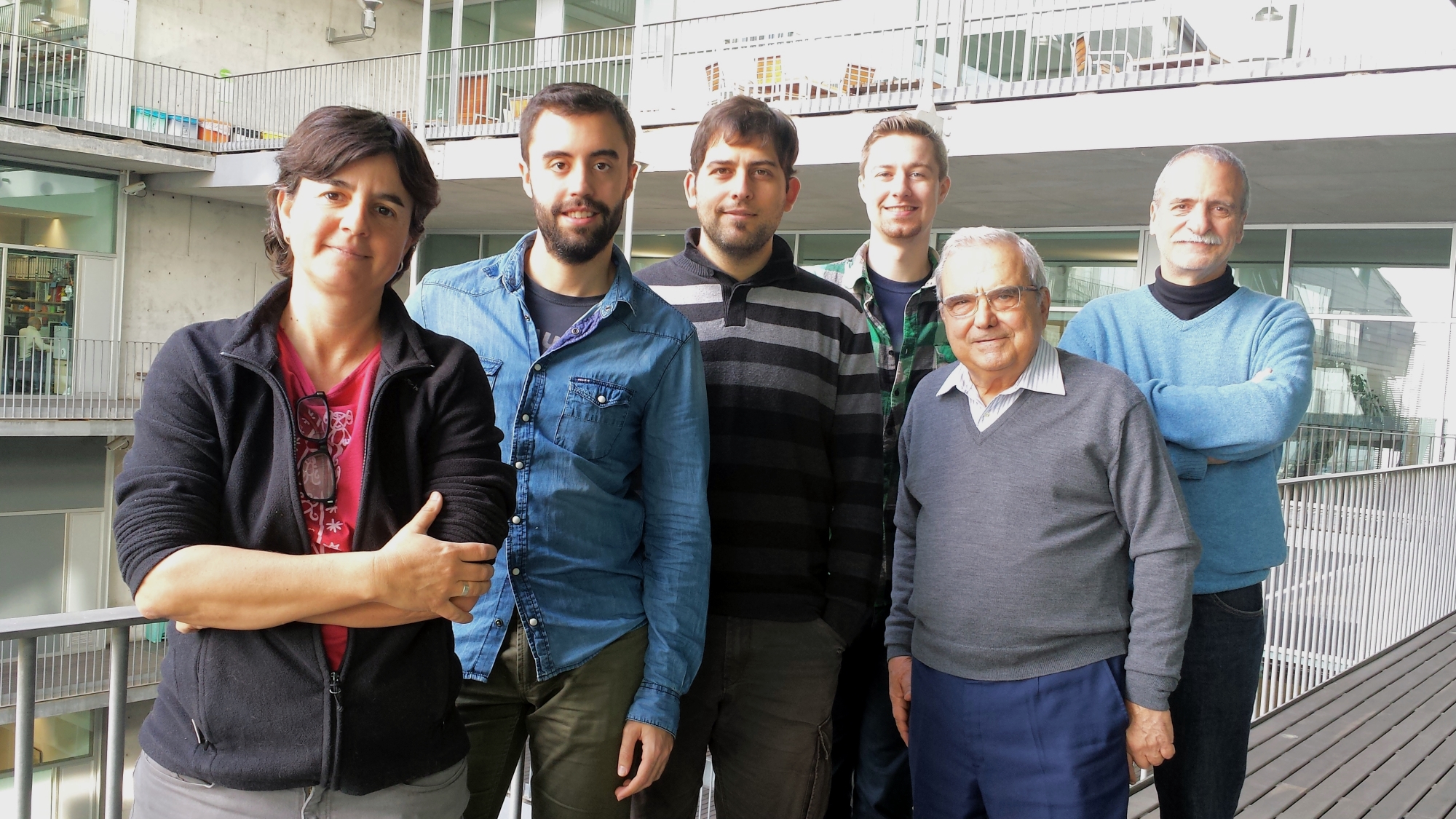Mar Albà created the GRIB Evolutionary Genomics group (IMIM-UPF) in January 2002, first linked to the Department of Experimental and Health Sciences, Pompeu Fabra University (DCEXS-UPF), and then from 2005 onwards as an ICREA researcher at the Hospital del Mar Medical Research Institute (IMIM). Her laboratory is computational and dedicated to studying how genomes change over time. “I am fascinated by how organisms can adapt to their environment inventing new functions, and nowadays we have a historic opportunity to study this, thanks to the amount of genomic data available”, says the biologist. When she set up her laboratory, more than a decade ago, she participated in the sequencing of the rat genome, one of the few mammals that were then being sequenced. “In contrast, we are now writing an article that analyses the sequences of 68 mammal species”, she states.
“I am fascinated by how organisms can adapt to their environment inventing new functions, and nowadays we have a historic opportunity to study this, thanks to the amount of genomic data available”
Mar Albà
De novo genes
Over the last seven or eight years, her group has specialised in a pioneer field: the identification of genes that have recently appeared in evolution – the so-called ‘de novo’ genes. Until recently it was thought that these genes did not actually exist, that all genes appeared at the beginning of history and that recent genes were originated by duplicating existing genes and diversification. “When a new gene present in only one species was discovered, an ‘orphan‘ gene, everyone said that their homologues in other species had not yet been found. But as more genomes have been sequenced, instead of finding these lost homologues, more and more orphan genes, unique for each species, have been unearthed”, explains Albà.
“The so-called ‘de novo’ genes have not originated by duplication of existing genes and diversification; they are unique for a given species”
Her group, one of the four or five in the world specialising in these de novo genes, has recently discovered the molecular mechanism that explains their appearance. They have found that they originate in the promoter region of the gene, the DNA sequence preceding the gene that controls its expression. “We think that there are many cryptic promoters that can be activated by random mutations. In most cases the RNA produced is not functional, but sometimes this RNA is beneficial, and this part of the genome becomes a new functional gene“, explains the Catalan researcher.
The importance of new genes
And how important are these new genes? Interestingly, studies on the Drosophila fly have found that they are often essential. “In a short time these genes can become very important, perhaps because their appearance causes a relaxation in the evolution of other genes, achieving a new balance”, hypothesizes Albà. “But we still have many questions about the impact of these de novo genes and their effect on possible adaptations in humans”, she adds.
The laboratory is now beginning to study de novo genes in yeast to better understand the molecular mechanisms of this phenomenon. They will compare the RNA sequences of ten yeast species, identify newly appeared genes and return to the lab to check experimentally if mutating promoter regions activate or inactivate these genes. They will collaborate with Lucas Carey from the UPF, who will cultivate the yeast in the laboratory: it is essential that they grow in exactly the same conditions to ensure that the differences seen are biological and not technically-induced.
The laboratory has also worked with researchers from Duke University on a very different, recently published study: how gene expression varies in Madagascan lemurs during their hibernation. They compared the RNA of the adipose tissue before, during and after hibernation. It was fun and challenging, says Albà, because the lemur genome is not sequenced and they had to rebuild the genes without a reference genome.







